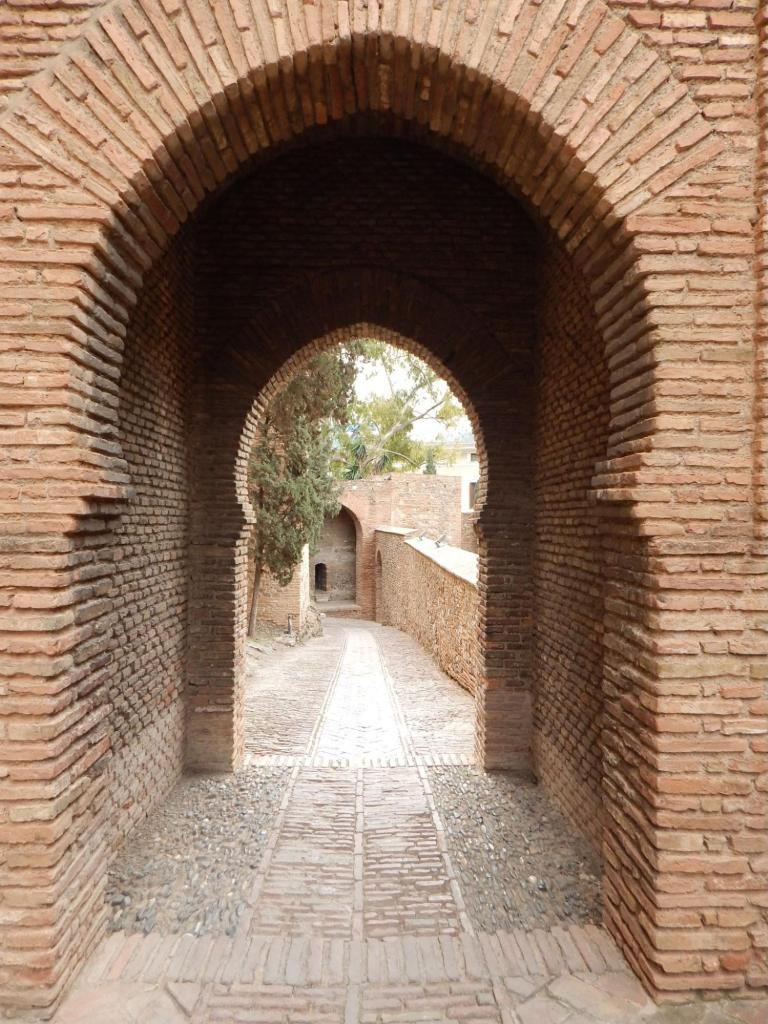Visiting Málaga in southern Spain got me thinking about the concept of time. Perhaps that’s not surprising given that the Andalusian city traces its history back over three thousand years.

Indeed, this sense of the distant past is evident at places like the Teatro Romano (built in the first century BC during the reign of Augustus I), the Alcazaba (a palace of the Muslim governors that was constructed on the remains of an older Phoenician fortress between the 11th and 15th centuries), and the Castillo de Gibralfaro (which took so long to reach that I hoped I wouldn’t be as old as the senior citizens enjoying a casual stroll back down when I eventually climbed the mountaintop).


But my reflections on the concept of time were strongest at the Pompidou Centre, arguably one of the city’s most striking venues thanks to its colourful glass entrance that looks like a giant Rubik’s cube but is only the tip of the iceberg given the vast space that lies underground. It’s not just because the visit brought back memories of my time in Paris, home of the original museum and one of the things I regret not having a chance to see during my brief visit there almost six years ago. Instead, it’s because the museum happened to be presenting an exhibition called A Time of One’s Own: Escaping the Clock.

The exhibition, which effectively starts before it begins with a 1966 short film from artist Bruce Baillie acting as a prelude, explores the different forms that time for oneself can take. It is divided into six sections with the first two – leisure time and holiday time – offering more literal interpretations. They start by making the point that even though we might think of free time as totally ours to choose, it too is subject to the constraints that our individualistic and capitalistic society imposes on it from as early as childhood. In other words, we are only able to enjoy time off once we satisfy the imperative to learn, to work, and to produce – an idea that resonated with me given how much I’d had to complete before making the trip.


The more intimate, dreamlike, and sense-based interpretations of time come at the end of the exhibition, with works on introspective time (retirement), in-between time (sleep and rest), inner time (daydreaming), and a final time for confrontation in which we make the journey back to the ‘real’ world. Given the increasing level of abstraction, I found these works more challenging. But the main idea is that even though humans have constantly invented instruments to measure time, we have never been able to capture our subjective views given that these are linked to affects and circumstances. It’s much like Jorge Luis Borges said: “Time is the substance from which I am made. Time is a river which carries me along, but I am the river; it is a tiger that devours me, but I am the tiger; it is a fire that consumes me, but I am the fire.”

Altogether, the exhibition features 114 pieces from 90 artists and includes canvases, sculptures, and video installations. To tie it all together and to highlight the confrontation between arithmetic time and our personal understanding of it, there are six artworks that introduce each section and act as “witnesses of time”. Much like the exhibition itself, they start out by representing the measured and imposed concept of time – think watches and clocks – before shifting to more abstract works that ask us to consider our physical, sensory, and even poetic versions of time.


My favourite of these was the fourth witness: a perpetual calendar created by Enzo Mari in 1960. Deceptive in its simplicity, it highlights the tension we find between the two opposing conceptions of time itself: the Judeo-Christian view that sees it linearly with a beginning and an end in contrast to the Greco-Oriental idea of cyclical time. What’s remarkable about this piece is that it allows us to measure time as we do with the changing of each day but without getting caught up in the somewhat arbitrary boundaries that come from a new month or a new year.

The exhibition is scheduled to end in October 2023. So if you’re reading this in the future (even though I’m writing it in the present that is now the past) here are three other contemporary art options that all have their own relationships with time, plus the added benefit of being free:
- The Jorge Rando Museum, which I stumbled upon by chance and used as a way to kill time on the way to a dinner that was still too early by Spanish standards, is dedicated to the painter and sculptor who is credited as one of the leading exponents of international Neo-Expressionism. Besides showcasing his work in almost a dozen themed rooms, it offers concerts, discussions and other activities that seek to educate and promote the way we look at art.

- The Centre of Contemporary Art is located in a former wholesaler’s market, which explains why it can feel like a bit of a maze that gave me a constant sense of explainable déjà vu as I kept returning to spaces I’d already seen. To celebrate its 20th anniversary, it will be presenting many events throughout the year, including workshops, lectures, podcasts, and short films.

- The Malagueta Cultural Centre used to be a bullfighting ring that even housed prisoners during the Spanish Civil War and World War II. During my trip, this heritage site was presenting an exhibition by African photographers. That made it a powerful way to reconnect with my own past while looking to a future of shifting demographics and perspectives that the city (co-winner of the 2020 European Capital of Smart Tourism competition and now bidding to host the World Expo in 2027) is ready to embrace.








